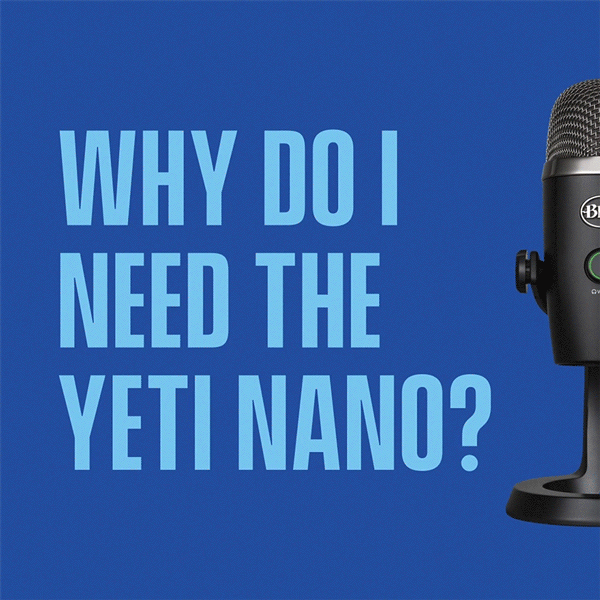5 growth hacks that will up your tech marketing game
1. Use nano- and micro-influencers not celebs for your influencer marketing campaigns
Nano and micro-influencers often have a closer, more personal relationship with their followers than macro talent can deliver.
This shows up in engagement rates. According to Aspire’s influencer marketing report 2024 average engagement rates by tier are:
Nano: 4.39%
Micro: 2.59%
Macro: 1.44%
Because nanos and micros are better aligned with their fan’s passion centers, their content is seen as more authentic, hence ROI is typically higher when eyeballs are measured against cost.
Another factor is that nanos and micros suffer less from the suspicion that their partnerships are motivated by their commercial interest. Hence their endorsements are more likely to be received as genuine word-of-mouth recommendations.
And that’s gold dust when it comes to reaching Gen Z, because they prize trustworthy, personalized content aligned to their values.
2. Try using AI as a think partner
Many marketers use AI as a research tool but it hallucinates. Others use it as a junior assistant but they’re missing a trick.
Instead, use AI as your think partner: someone who can kick the tires of your ideas, spot the angles you’ve missed, and prepare you for the tough questions.
You’ll be stunned at how well this can work.
Next time you’re preparing for a presentation try adapting the following prompt:
“I’m a marketer for a consumer tech brand. I’m about to present my GTM plan to the board. Imagine you are a board member reviewing my plan. Please tell me what I’m missing. Make recommendations for how I can improve the plan, and how I can make it more compelling.”
You’ll need to paste in your plan, or a version of it, to give the AI something to work with. To maintain confidentiality, strip your work of identifying features and set the AI’s privacy settings so that your data is not retained in the history, or used for training purposes. Only use an AI that meets your privacy requirements.
Remember to give your AI a persona: whether that be a member of the board, or the sales team, or your colleagues in marketing.
If you get a generic response then develop the conversation by asking the AI to explain its ideas, or asking for further insights.
It helps to direct the AI down specific avenues. For example, you could ask:
“What marketing strategies have benefited other companies selling this product?”
“Give me three strengths and weaknesses of that approach.”
Or you could present a specific challenge such as product differentiation, or some negative feedback you need to counter. Ask the AI for new ideas, tactics, data, or recommendations that can help solve your issue.
Bear in mind, the AI isn’t good enough to give you all the answers. But it’s ingested more information on your industry than any human alive. Hence it can provide plenty of inspiration and insight that will help you beef up your strategy and cover off the angles.
3. UGC is massive. Here’s how to make it work for a consumer tech campaign
Non-videogame brands from GoPro to Doritos to Aldi have tapped into the popularity of UGC to generate a ton of engagement plus free, sharable content that makes their socials a joy. Follow these steps:
Research your audience. What topics and trends do they love? What type of content do they like to share? Which platforms do they share it on?
What feelings or associations does your brand evoke and how can those be tied to a topic or trend discovered in step one?
What creativity tools does your product incorporate? If none, that’s OK, anyone can take a picture or a video. The important thing is to make it simple to create for your campaign.
Make it easy to share. You’ll need a custom hashtag and to be prepared for your participants to share their UGC on social media.
Use influencers and creators to get the ball rolling with their UGC takes on your campaign.
Incentivize contributions with ongoing challenges and prizes.
Engage with your audience: reshare funny / interesting / creative efforts and rhapsodize about your fan’s efforts.
Create a UGC showcase on your campaign website.
Integrate UGC into your product if possible: perhaps via a naming or packaging design challenge.
Non-videogame brands have used all manner of techniques to inject fun and creativity into their UGC campaigns. Some have encouraged participants to sing over an especially commissioned backing track, copy influencer dance moves, use selfie filters, send in location pics featuring the product, or pics of DIY setups, or customisations (think googly eyes on a mouse or personalized laptops), or memes, or reaction videos and so on.
Keep it simple, keep it creative, keep it fun and the UGC will pour in.
4.Make your product explainer videos real, not CGI
That was the verdict of our live audience panel when we invited them to evaluate a live action product video versus a CGI alternative.
The reason was simple. An explainer video should be:
Simple
Informative
Short
Real
The CGI video fell down because it was too flashy, too cinematic, and therefore less believable.
Ultimately, we find that pared back presentations instill more confidence in the product and thus the buying decision.
5. Give people what they want on TikTok
Here’s how:
Hook – Your idea must grab the viewer in the first three seconds
Exclusive – Is this content fans can’t get anywhere else?
Simple – Will everyone get what this video is about within three seconds?
Visually compelling – Make it pop!
Comments – Does it spark a conversation?
Native – bespoke TikTok content works best. If you repurpose content from other channels, then at least blur the top and bottom of horizontal videos. People will skip your clip rather than turn their phone.
Searchable – Use one product specific hashtag and at least four general hashtags that can spread your video to a broader audience. Remember these hashtags still need to be relevant.
Experimental – Try new things. TikTok is always changing. Keep an eye on major TikTok influencers in your domain to see what’s working. To level up your results, work with other stakeholders to adapt your brand guidelines to the platform. For example, humor goes a long way on TikTok. Content can be more rough and ready, while long lead times are likely to cause trend-based content to miss the moment.
GET IN TOUCH
GET IN TOUCH
Unlocking your consumer tech audience in five steps
We help our clients make data-led decisions by providing new audience insights that go beyond market share, unlocking fresh strategies for winning over the consumer.
Step one:
We apply a demographic filter, dividing the market by relevant markers such as age, gender, income, location, interests and favored media platforms.
Step two:
Next we uncover the audience’s market, brand, and product attitudes using psychographic techniques. This screens consumers by:
Product ownership, needs, usage and pain points
Brand perception and loyalty
Price sensitivity
Purchase considerations and barriers
Lifestyle factors
Step three:
We dig deeper still to discover the target audience’s emotional drivers. By utilizing an ethnographic approach, we unveil personal attributes that influence purchase behavior, product usage, and message receptivity. These attributes include:
Underlying motivations: e.g. the need for social acceptance, community, status, self-expression, escapism, excellence, wellbeing, empowerment
Personal values: e.g. sustainability, inclusivity, reward-seeking, mission-driven, quality-orientated, fashion-forward
Personality traits: e.g. creative, ambitious, entrepreneurial, collaborative, nostalgic, open-minded, conservative, adventurous, trend-follower, competitive, image-conscious
Step four:
The various consumer overlays combine to create high-resolution market segmentation profiles that fuse functional, sociological, and psychological insights.
Because those segments are exceptionally detailed we can identify:
Best groups to target for acquisition, retention, brand awareness objectives etc.
Optimal messaging strategies that tap into each segment’s surface-level product needs plus their underlying emotional drivers.
Hidden audiences that have been missed by less rigorous methodologies.
Step five:
Competitor analysis and comms review. This final step enables us to spot:
Competitor strategies that are working (and how to counteract them)
Gaps in the market
Brand perception strengths and weaknesses
Opportunities and emerging threats
Audience response to in-market comms
Key search and social trends
Campaign performance
Competitor investment levels, media and search profiles
We assess your competitive landscape by analyzing share of voice, social listening, search and traffic sources, ad performance metrics, and sentiment and engagement among other tools.
Naturally, we can layer any of these elements onto your existing data to widen your field of view and make your marketing battlefield more transparent.
Strategy leverages data-driven insight
Powered up by next-level audience data, our strategists translate the key findings into an actionable strategic response that enables your brand to target consumers the right way.
Case study one
For example, our work on the ASUS Vivobook S campaign revealed that a product-features first approach would fail to differentiate in a saturated market.
But there was an opportunity to stand out if we led with the emotional benefits of the laptop. By putting the consumer front and center, we could show the audience how the tech supported them to live their life the way they want.
Case study two
In the case of Logitech Blue’s USB mic range, we showed that the role of a mic in a streamer’s life was as emotive as a tennis player’s favorite racket or a runner’s trusted brand of shoes.
This finding provided a clear path to deeper engagement with the audience, and underpinned a fresh approach based on connecting with the consumer’s most powerful emotional drivers.
Case study three
Game tech brand Logitech G found Gen Z were proving hard to reach with traditional product-focused messages. Our strategy capitalized on the insight that Gen Z consumers want brands to share their values in addition to providing a desirable product. The outcome was the “Keep Playing” social campaign that positioned Logitech G as a brand committed to the universal values of gaming: passion, joy, fun, inclusivity, diversity, and togetherness.
Creative: crafting compelling narratives
Our Creative team takes the strategic framework, along with the research findings and your original brief, and distills it into a core proposition known as the creative platform.
The creative platform is the unifying concept that ties together the ideas, content, visual look and tone of your campaign.
It’s the overarching theme that keeps the campaign coherent, distinctive, authentic, and trained on your goals.
The creative platform enables us to test that each and every execution is working hard for your brand, regardless of whether it’s a Digital Out-Of-Home takeover, viral stunt, or Twitch influencer campaign.
Using the creative platform as inspiration, we then craft ideas designed to cut-through to the audience because they speak directly to their needs, mindsets, values, and passion centers.
For example:
The Signature Line mouse and keyboard combo is aimed at knowledge workers frantically juggling work and personal tasks in work-from-home scenarios.
Our task was to convert the product benefits into tangible emotional pay-offs using a powerful and relatable narrative.
The answer was a hero film centered on a mother-daughter relationship and mom’s desire to meet the demands of both family and the office - aided by the tech’s productivity assists.
Meanwhile, our ASUS Vivobook S launch video stars two young professionals heading for career disaster. As the story unfolds, they turn their predicament into triumph thanks to their laptop’s key features.
Optimizing the experience
As the campaign goes live, our media team swings into action to make sure your message is heard loud and clear in all the right places.
They know exactly where to find your audience: which platforms, which times, which plays catch the attention of the algorithms.
From there, they optimize your campaign in real-time. Boosting, bidding, tweaking and doubling down on the executions that catch fire with each demographic.
We only win, if you win, so these guys are absolutely obsessed with meeting your KPIs and pursuing the lowest possible cost-per-acquisition for your campaign.
Check out our work
Take a look at some of our killer campaigns for tech and games brands:















